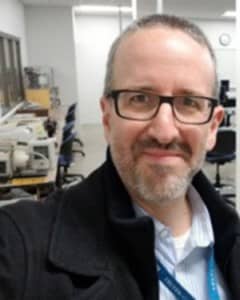By Jeffrey Ruiz
Let me tell you a little story about change. About three years ago, I was invited to contribute to a major computer database project. The project was exciting, had a great plan and, more importantly, allowed our HTM team to help streamline processes that could benefit the field. It was a great project to be part of and great to help lead (dare I say!) “change” in a positive and effective way.
Implementation of the project started out smoothy. We were excited and optimistic about the outcome. Things stalled a bit, but our project team persevered and we focused on what we could impact. But then a big change came out of nowhere—like a 2×4 on the back of the head. Wham! Our organization was bought out. Our project was permanently halted, and the positive energy surrounding the project was replaced with apprehension, concern, shock, and fear of the future.
Stepping Out of the Comfort Zone
Change is a difficult thing. We, as humans, like to be in the homeostasis mindset of always staying the same. Not too hot, not too cold—just right, as the old storybook used to say. So, yes, we like being in our “just right” state of mind. This mindset is found in our field: Should I volunteer to lead that special capital equipment project? Whoa, maybe I’ll just attend the meetings and offer support.
Should I present an AEM strategy to my Environment of Care committee?Whoa, maybe I’ll just keep reporting our PM completion and “could not locates.” Should I take an active role in developing key clinical alarm fatigue strategies?Whoa, I’ll just provide a report showing alarm data. Should I have that difficult conversation with my key team member to help raise his or her skillsets?Whoa, I’ll just let things run the same for now. Every day we face change—and we can either meet it head-on or look the other way.
At the keynote presentation at this year’s AAMI Exchange, Nicolas Webb, a futurist, technology CEO, and award-winning inventor talked about how today’s healthcare workforce is solving for change. They are retiring. Webb’s message was simple: Be a disrupter since disruption allows change to occur. Instead of reacting to change, be ahead of it.
When that 2×4 of change fell to the floor, I was able to meet the change square on. I offered support and encouragement to not only our new organization, but to my current team members as well. I looked at how the change would impact my team, my client, and our patients. I found ways to implement change and shared them with my team. After all, change isn’t easy, but if you are open, honest, and communicate with your team, they will have a better mindset to embrace the change.
Proactivity Is Key
We know the healthcare technology landscape is changing. Could we see a single-payer system in the next five to 10 years? Will AI take over AEM programs and preemptively predict when critical failures will occur? Will super central monitor rooms report and act on alarms remotely, covering huge geographical areas?
Will EMR data be pushed to the cloud so patient data interoperability could be easily managed at a fraction of the cost we see today? All these items may come to pass. Or, something more advanced and cost-effective could be developed even sooner.
It is up to us, the stewards of healthcare technology, to help manage this change and identify any patient risk or safety gaps. We have done this before. Many people considered Y2K a possibly catastrophic event. In hindsight, the industry took on this changing event and managed the patient risk and safety items without fail.
So, what should we do? Embrace change, study the change, and see how it can benefit you. Address change proactively. When you see something on the industry horizon, learn about it and try to anticipate how the change will impact you. Share with your team the potential change; your respective teams are a powerful resource to support change and even provide ideas to support or implement the change. And, finally, learn from the change. The lessons learned can be applied to future opportunities of change.
I’ll know I will follow that lesson. And the next time I see a 2×4 swing my way, I’ll make sure to duck.
Jeffrey Ruiz is technology manager for a large hospital, and also is an adjunct professor in the biomedical engineering program at a community college, both in western Michigan. Questions and comments can be directed to 24×7 Magazine chief editor Keri Forsythe-Stephens at [email protected].






